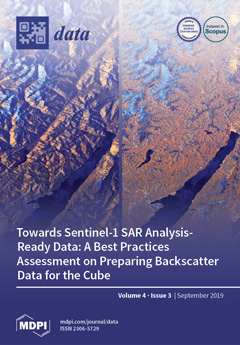Wood density (
) is a trait involved in forest biomass estimates, forest ecology, prediction of stand stability, wood science, and engineering. Regardless of its importance, data on
are scarce for a substantial number of species of the vast Atlantic Forest
[...] Read more.
Wood density (
) is a trait involved in forest biomass estimates, forest ecology, prediction of stand stability, wood science, and engineering. Regardless of its importance, data on
are scarce for a substantial number of species of the vast Atlantic Forest phytogeographic domain. Given that, the present paper describes a dataset composed of three data tables: (i) determinations of
(kg m
−3) for 153 species growing in three forest types within the subtropical Atlantic Forest, based on wood samples collected throughout the state of Santa Catarina, southern Brazil; (ii) a list of 719 tree/shrub species observed by a state-level forest inventory and a
value assigned to each one of them based on local determinations and on a global database; (iii) the means and standard deviations of
for 477 permanent sample plots located in the subtropical Atlantic Forest, covering ∼95,000 km
2. The mean
over the 153 sampled species is 538.6 kg m
−3 (standard deviation = 120.5 kg m
−3), and the mean
per sample plot, considering the three forest types, is 525.0 kg m
−3 (standard error = 1.8 kg m
−3). The described dataset has potential to underpin studies on forest biomass, forest ecology, alternative uses of timber resources, as well as to enlarge the coverage of global datasets.
Full article





